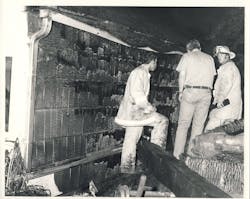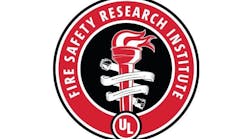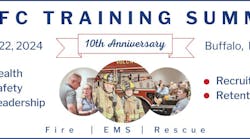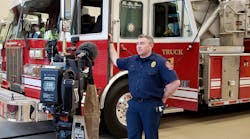Longtime Chief Retires
Pullman, WA, Fire Chief Pat Wilkins has retired after serving the fire department for more than 40 years, with 27 of those years as its chief. Wilkins was instrumental in a number of programs that helped the city achieve an improved fire rating from class 5 to class 4, which resulted in lower fire insurance premiums for both homeowners and businesses. He also was a leader in establishing a paramedic program for the city.
One of the significant challenges that Wilkins worked on during his years with the city was assumption of the EMS and fire services for the university when the Washington State University (WSU) administration chose to dissolve its fire department. For a period of time, Wilkins served as chief of both the WSU and Pullman fire departments.
Wilkins worked on getting voter approval for the creation of an EMS levy that the voters later made a permanent EMS levy. He helped on a levy that added three additional firefighters/paramedics and three additional police officers. He also worked on funding agreements with WSU, rural fire districts, other communities and Pullman Regional Hospital. One of those agreements with WSU jointly funded the pumper-ladder truck that was delivered in 2004.
In order to improve response times to the growing north area of the city, Wilkins facilitated the reorganization of the department, created the position of fire lieutenant and staffed the north area station with career firefighters.
Wilkins served on the Whitcom (the area 911 dispatch center) executive board, the Whitman County Communications Committee and was a member of the Washington Fire Chiefs Association. He was also involved in a number of community and service groups including Rotary, the Pullman Cougar Club, Shriners, and the Salvation Army.
Pullman Mayor Glenn Johnson appointed Operations Chief Mike Heston as the Acting Fire Chief effective August 10. The process for selecting a permanent Fire Chief will begin in a few weeks with the intention of having the permanent fire chief on duty in January.
Bomberos Away!
Mexican firefighters recently took part in a week of specialized training as part of the Bombero Program. About 50 firefighters from Mexico – called Bomberos in Mexico – participated in this year’s program. Each year the site of the training rotates between Northern California and Southern California. Instructors from San Bernardino County Fire, San Bernardino City, Cathedral City and Riverside City Fire Departments, as well as CalFire focused this year’s training on Incident Command, Ventilation, Structure Collapse, and Rapid Intervention Crew tactics/Mayday.
The Bombero Program is a partnership between California and Mexican fire departments that started more than 45 years ago. Each year groups of firefighters from Mexico are brought to the United States for training, and thousands have graduated over the past three decades. The trips are free to the firefighters, and the program is funded by donations collected throughout the year.
The Bombero Program provides valuable firefighting tools and techniques to the firefighters of Mexico, in turn helping them provide their citizens with better fire protection. This chosen group of Bomberos then returns to their homeland to share what they have learned with their colleagues.
The Boys (and Girls) of Summer
The Fire Science Division of Rockingham Community College in Wentworth, NC, just completed a Firefighter I & II class. The program was attended by 15 high school students who gave up their summer to pursue their education to become firefighters, according to Lisa King, Director of Public Safety at Rockingham.
Captain Jeff Walker of The City of Reidsville Fire Department, who is also employed by Rockingham Community College as a part-time Fire and Rescue instructor, helped run the class.
The program ran for eight weeks and all the classes were taught under the North Carolina Firefighter I & II State outlines. Upon completion of the course, each student received credit for 17 of the 21 classes needed to obtain Firefighter I & II State certification.
“I cannot say enough about these students who gave up their summer break to complete the course,” said Walker. “These young men and women have shown the motivation and dedication needed to become firefighters.”
Partnering For Prevention
Working in partnership with the National Association of State Fire Marshals, the International Fire Marshals Association and Cross Cultural Health Care Programs, nonprofit FIRE 20/20 will develop and implement a new online training program for first responders. The program, “Partnering for Prevention,” will help fire and emergency services departments across the nation increase the reach and effectiveness of fire prevention and community risk-reduction programs with their growing multicultural communities.
“Our country’s changing demographics are putting additional strains on fire prevention, community risk reduction and emergency response,” said Larry Sagen, FIRE 20/20 Executive Director. “Our research surveys showed that the already-complex nature of first response is further complicated by cultural divides, mistrust, few non-emergency interactions and language barriers. These vulnerabilities lead to increased safety risks for both first responders and the multicultural and high-risk communities they serve.”
Partnering for Prevention’s engaging, interactive training content will be available for free, 24 hours a day, eliminating travel expenses and time off-the-job, and offer opportunities for learning from any place with an internet connection.
“Fire 20/20 is spearheading this training program for the fire service to give them the ability to effectively interact, understand, and communicate with people across cultures,” said Steve Peavey, Second Vice President, International Fire Marshals Association. “We are pleased to be working with them on this important effort.”
Partnering for Prevention will be pilot tested in April, 2012, and made available to fire departments for their use shortly thereafter. To receive updates about the progress of the program's development and a launch alert, join the FIRE 20/20 eNewsletter at www.fire2020.org.
Fire Death Rates Improve Worldwide
The Federal Emergency Management Agency’s (FEMA) United States Fire Administration (USFA) has released a special report examining the nature of the United States fire death problem and compares it to other industrialized nations.
The report, “Fire Death Rate Trends: An International Perspective,” was developed by USFA’s National Fire Data Center. The analyses in this report reveal the magnitude of the fire death problem; trends in overall rates and differences between the countries are also explored. The report is part of the Topical Fire Report Series and is based on fire death data from the World Fire Statistics Centre and U.N. Demographic Yearbook population estimate data.
According to the report:
- From 1979 to 2007, the fire death rate in the United States declined by 66 percent.
- Over that same time span, fire death rates per million have consistently fallen throughout the industrialized world.
- The North American and Eastern European regions’ fire death rates have fallen faster than other regions.
- Japan, a leader in fire safety, shows a slight worsening of fire death rates over the years studied.






